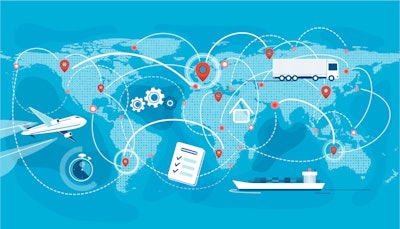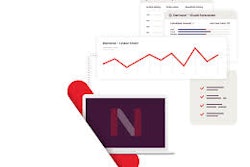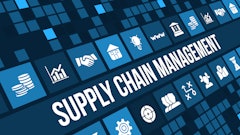
Sustainability and traceability are two critical characteristics of a successful, modern supply chain. However, many organizations are struggling to maximize these initiatives, particularly within the middle stages of the supply chain, also known as the production chain.
In fact, 60% of global emissions stem from supply chains, demonstrating a lack of true sustainability. Similarly, traceability efforts are in question, as greenwashing accusations from consumers are increasing year over year.
What’s more, industry regulations are increasingly considering sustainability and traceability. Recently, the European Union announced new deforestation regulations as well as the Corporate Sustainability Due Diligence Directive, the Ecodesign for Sustainable Products Regulation, the Ambient Air Quality Directive, and the EU Forced Labor Regulation. With these regulations in place, sustainability and traceability have never been more important.
So how can supply chain executives foster a truly sustainable and traceable production chain while meeting compliance regulations? Let’s examine the three foundational pillars that contribute to a successful modern supply chain.
1. Data Capture and Consolidation
Companies are challenged to effectively collect and track data from across the production chain. This challenge stems from the fact that many companies still rely on spreadsheets and emails to manage data, even critical metrics related to sustainability and compliance. This manual approach lacks efficiency and transparency because information can be lost and overlooked. Additionally, many of the companies at the top of the supply chain don’t provide sufficient information for companies downstream. Without proper data collection, it’s nearly impossible to accurately measure performance against a retailer’s goals and provide transparency for consumers
The answer to this problem is data management. Data is central to any successful, modern supply chain, and it can be used to empower the visibility needed to meet the retail industry’s high expectations.
Investing in true sustainability means developing, capturing, measuring, and understanding data across the entire supply chain, from raw materials to final product delivery. Different suppliers in the production chain might display data in different formats and even different languages. By digitizing and standardizing this process, the data can be captured and displayed consistently, ensuring nothing gets lost in translation.
What’s more, when suppliers are added as the retailer’s business scales, they oftentimes bring along a complex data web. Preparing a structured data collection and consolidation model helps ensure additional information can be incorporated without complicating existing processes. With this system in place, retailers can ingest and analyze data from new suppliers immediately, removing the traceability barriers that might inhibit growth for retailers that enter supply chain data manually.
In addition to consolidation, data management opens the door for the assessment of key sustainability metrics, including labor and working conditions, health and safety, chemical management, energy usage, water use, waste management and more. This information can then be shared across key stakeholders to increase visibility across the supply chain.
2. Upstream Supply Chain Visibility
From the farm or the factory to the retailer’s shelf, dozens of stakeholders touch every product. Having a large supply chain can often help retailers establish best-in-class products by taking the best elements each supplier offers. However, diverse supply chains come with risk if retailers aren’t ensuring each vendor is compliant and meeting sustainability objectives.
This visibility requires retailers to carefully evaluate every vendor. Even the vendor that prepares the smallest aspect of a product, like an aglet on a sneaker, can leave a retailer vulnerable to potential non-compliance, counterfeiting and delays.
To protect the business from risk, retailers must foster upstream supply chain visibility. Once retailers map, centralize and visualize their suppliers, products and relationships, they gain a complete picture of the supply chain. This allows them to identify anomalies and know when to take corrective action so products never enter the market with non-compliance issues or unacceptable environmental practices.
Similarly, if a critical piece of the supply chain is impacted by sanctions, factory closures or environmental challenges, upstream visibility can foster the communication needed to identify and fill gaps.
3. Ecosystem Accountability, Empowerment and Collaboration
Collaboration is key to supply chain traceability. All stakeholders and suppliers must understand the retailer’s compliance and sustainability goals and work in tandem to achieve them.
Today, suppliers understand that sustainability and traceability are differentiators, and these businesses have their own practices in place. As a result, retailers can’t necessarily dictate how a supplier upholds these values, but they can collaborate with the suppliers and empower them to meet the retailer’s requirements consistently. Therefore, it is essential to form strong relationships with these parties to ensure that everyone is working towards the same goals.
Fortunately, today many retailers have digitized aspects of their supply chain, making it easier to measure progress towards compliance requirements. For example, imagine a retailer intends to decrease the carbon footprint of its supply chain within ten years. This goal can be documented on the shared management platform, and progress can be showcased digitally, empowering everyone to work towards the joint goal. And if a new supplier is added to the mix, it can immediately see its role in the equation and understand how the ecosystem collaborates.
This approach promotes open and honest communication. For instance, if a supplier is struggling to source materials that contribute to the goal, the retailer can provide support and look for other options. Similarly, if sanctions are impacting a supplier’s resource pool, it can communicate its needs to the channel and discuss alternatives, avoiding backlogs.
By increasing visibility, retailers can promote accountability across the supply chain ecosystem and better express and achieve shared goals.
Focus on the Foundation
Supply chains have become increasingly complex in recent years as the sociopolitical climate has evolved worldwide. Following these best practices will help retailers foster a successful, modern supply chain that exceeds sustainability and compliance goals. Proper data management, visibility and collaboration are essential to building a more sustainable retail industry and engaging eco-conscious customers around the world.




















